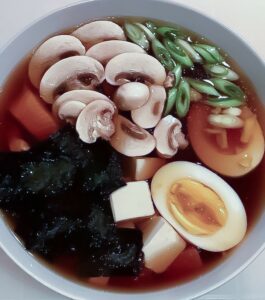
The hot summer days are coming to an end and we are approaching autumn.
Autumn is a changeable time reminiscent of a bag of mixed sweets, sun, wind and rain and sometimes on the same day.
Autumn is one of the most beautiful seasons.
Nature and forests show themselves from their most beautiful side. The forest abounds with mushrooms and just around the corner awaits the classic root vegetables.
In Japan, noodle soups are tasty and healthy dish are enjoyed all year round. It is a dish that is very popular when summer turns into autumn. It is a dish that warms on the changeable autumn days.
A classic Japanese noodle soup contains fish, meat, noodles, vegetables and seaweed in other words it is one of the healthiest fast foods on a busy day.
In the Noodle soup course for beginners, you will learn how to make tasty soups from scratch with Japanese noodles, soups that have the same unique aromas and flavors as if served in restaurants in Japan.
_
Zoë has lectured and held sushi courses for A. P. Moller – Maersk, Hugo Boss Nordic, Novo Nordisk, Novartis, Velux, Gorrissen Federspiel, Beierholm revision, Elbek & Vejrup and many more.






